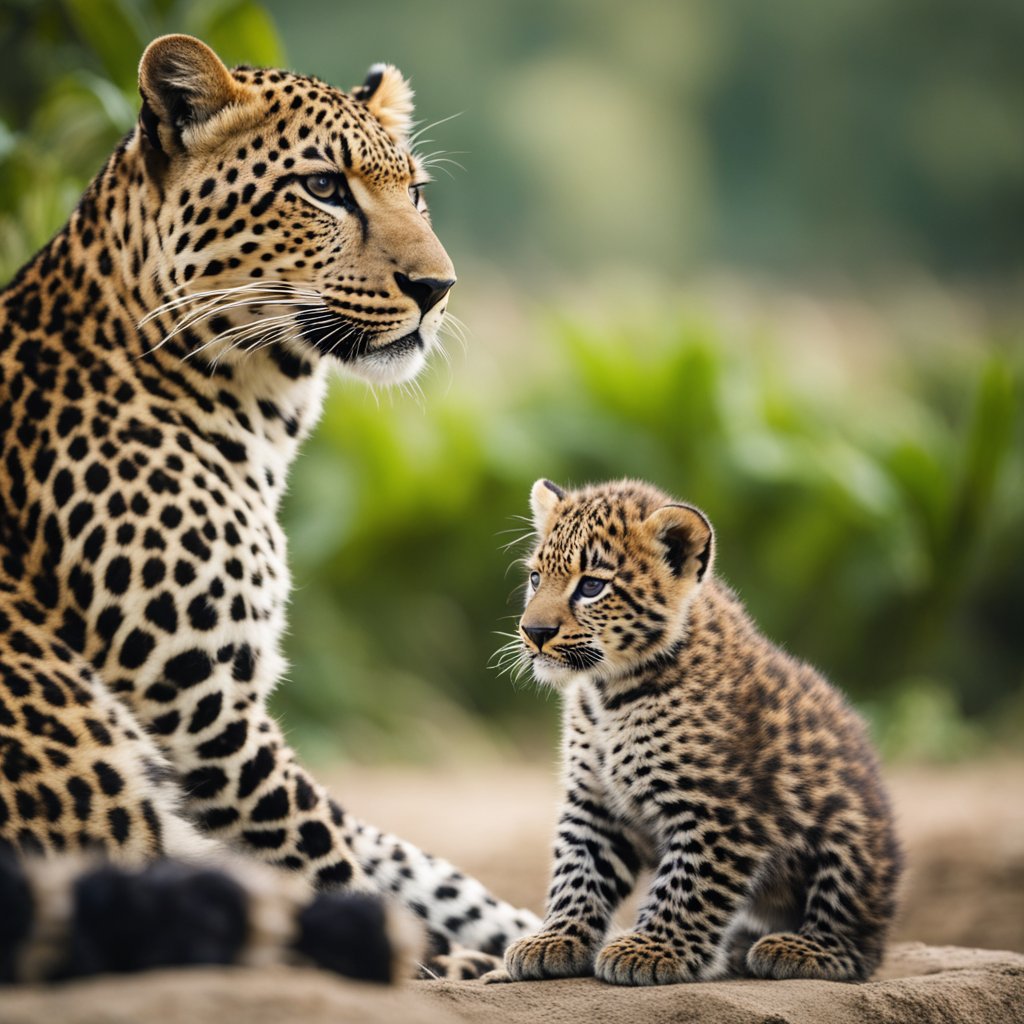
Do Leopards Inherit Their Patterns?
Leopards are one of the most widely recognized and admired wild cats, not least because of their distinctive spotted coats. Leopards inherit their patterns. These patterns are not just for show; they play a critical role in their survival, offering camouflage in the diverse habitats they occupy, from savannas to forests. The formation of these spots is a complex process influenced by genetics, hinting at an inherited component to these unique coat patterns.
Research suggests that the intricate patterns on a leopard’s coat are indeed inherited, following the principles of genetics. Presumably controlled by multiple genes, the exact mechanisms involve the interaction of these genetic factors with developmental and environmental inputs to create the spots and rosettes that are characteristic of the species. This genetic patterning also implies a variation among leopard subspecies, whose patterns are adaptive traits fine-tuned by their specific ecological niches and life behaviors.
Key Takeaways
- Leopard coat patterns are inherited and serve as camouflage.
- Genetics, environment, and subspecies variation influence pattern development.
- Leopard spots are an adaptive trait shaped by ecological and behavioral factors.
Genetics of Leopards: Leopards Inherit Their Patterns
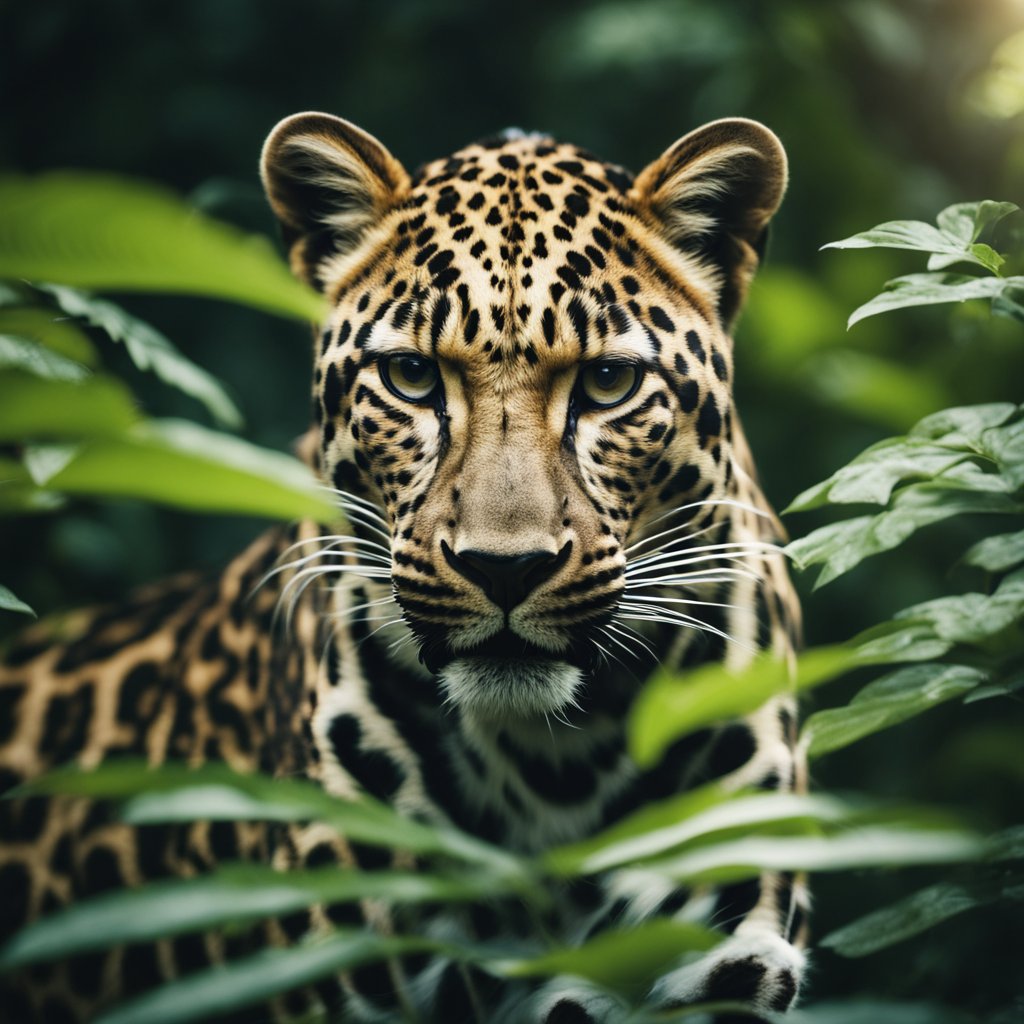
The intricate patterns on a leopard’s coat, featuring distinctive rosettes and spots, are a result of complex genetic processes. Understanding these genetic underpinnings is crucial for deciphering the inheritance patterns of these magnificent creatures.
Understanding Leopard DNA
Leopard DNA contains the blueprint for their physical appearance, including the unique coat pattern. Scientists have identified specific genes that control these processes. The activation timing of these pattern-forming mechanisms is genetically determined and plays a significant role in the development of each leopard’s distinctive spots, meaning leopards inherit their patterns,
Leopards Inherit Their Coat Patterns
Leopard coat patterns are the product of inherited genetic combinations. By examining genetic similarity and known lineages, researchers have found a correlation between relatedness and phenotypic expression of coat patterns. Rosettes and spots on leopard fur, while individually unique, showcase a hereditary link. These patterns are not just randomly generated but are profoundly influenced by the leopards’ genetic makeup. Leopards inherit their patterns,
Physical Description of Leopards
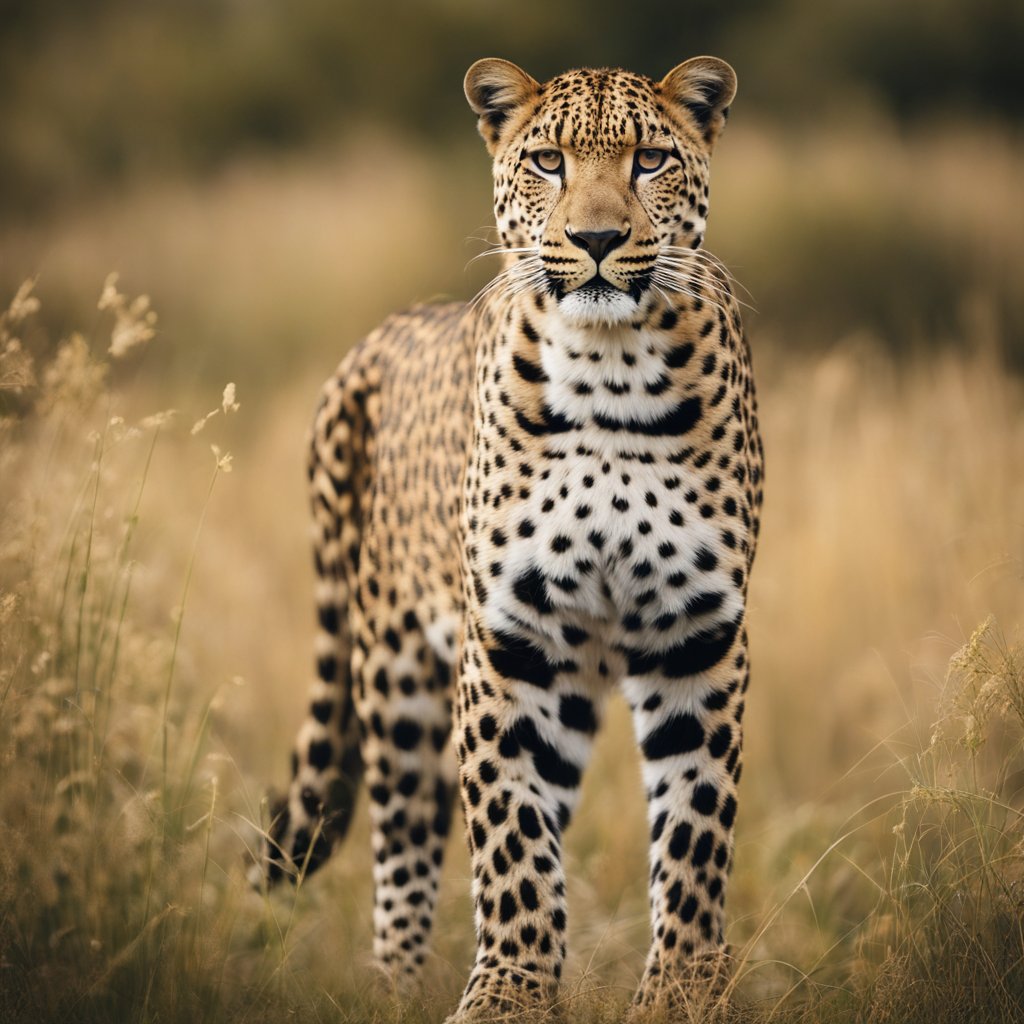
Leopards are renowned for their distinctive pelage and robust build, varying significantly in pattern and body size across different habitats and regions.
Variations in Patterns and Markings
Leopards display a wide variety of coat patterns, primarily characterized by their rosettes which are similar to spots but are larger and consist of a darker outer ring with a lighter center. The distribution and density of these rosettes are unique to each individual, much like human fingerprints. Markings can range from densely packed rosettes to more sparse patterns, influencing their camouflage effectiveness in different environments. Notably, whisker spots, or the spots located on the muzzle area, are also distinct and can be used for individual identification.
Size, Weight, and Physical Distinctions
In terms of physical size, leopards are generally classified as one of the larger species of wild cat. Adult leopards typically:
- Weight: range between 37 kg (small females) to over 90 kg (large males).
- Body Length: can measure from 90 to 160 cm with an additional tail length of approximately 60 to 110 cm, which aids in balance.
They possess a muscular build with relatively short legs and a broad skull. The physical distinctions of leopards contribute to their adaptability in various terrains, from climbing trees to swimming. Size and weight can vary significantly among subspecies, influenced by their geographic location and availability of prey.
Leopard Subspecies and Their Patterns
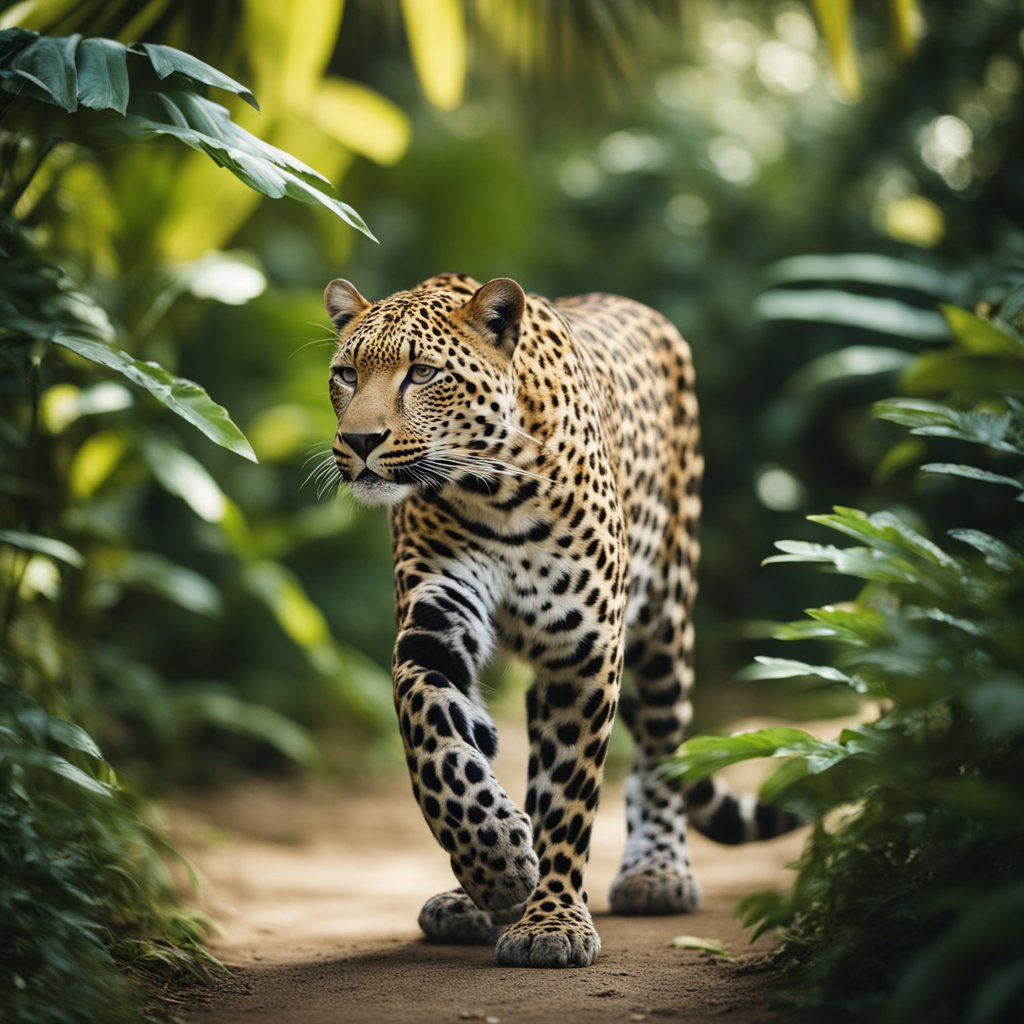
Leopard patterns are distinctive and vary among subspecies, reflecting evolutionary adaptations to their different habitats.
African Leopard
The African leopard (Panthera pardus pardus) exhibits a coat pattern characterized by rosettes, which provide camouflage in the diverse habitats it occupies, from forests to savannas. These rosettes are circular in East African leopards but tend to be squarer in Southern African variants, demonstrating a range of pattern inheritance within the subspecies.
Snow Leopard
Snow leopards (Panthera uncia), adapted to the cold, rugged mountain terrains of Central and South Asia, have a coat with rosettes that are larger and spaced farther apart. This helps them blend into the rocky background. Their patterns are consistent with both their lineage and their environmental demands.
Amur Leopard
The Amur leopard (Panthera pardus orientalis), primarily found in the Russian Far East, has widely spaced thick-rimmed rosettes and a dense coat suitable for colder climates. The patterns and thickness of the coat act as essential survival traits in the snowy range they inhabit.
Other Leopard Subspecies
Other leopard subspecies have patterns that result from a complex interplay of genetics and habitat needs. Patterns can range from densely packed rosettes in the Javan leopard (Panthera pardus melas) to the more irregularly spaced patterns of the critically endangered Indochinese leopard (Panthera pardus delacouri). Each pattern is an inherited trait that contributes to the subspecies’ stealth and hunting efficacy.
Habitats and Ecological Impact on Patterns
Leopards exhibit ecological adaptability which influences their physical patterns across different habitats. Specific environmental factors, such as forest density and regional climates, contribute to the variation observed in leopard fur patterns, enhancing their survival through better camouflage.
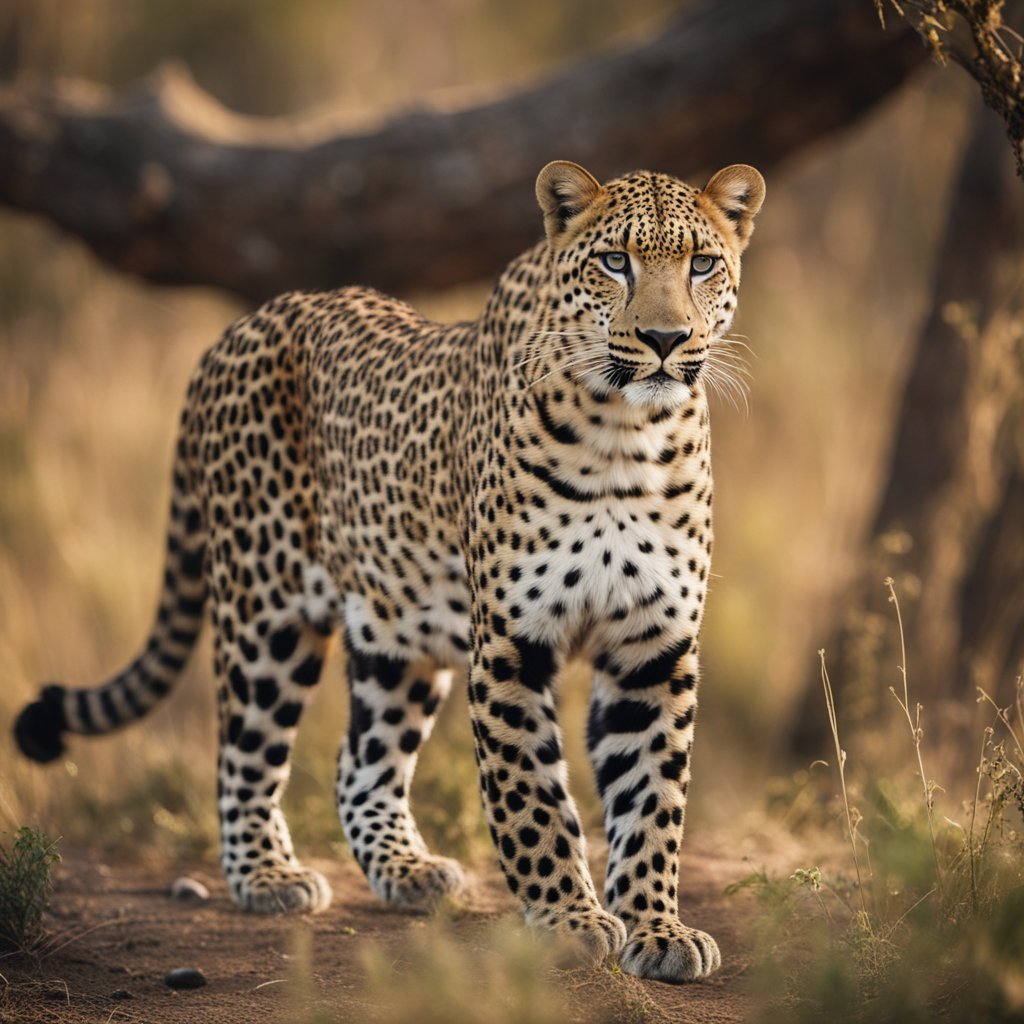
Leopard Habitats Across Continents
Leopards are highly adaptable, residing across various continents in a range of habitats. In Africa, they inhabit savannas, grasslands, and forests, all of which influence their coat patterns. Dense forest environments favor leopards with darker, more irregular spots that offer better camouflage among trees and underbrush. Meanwhile, leopards in more open habitats like grasslands tend to have more pronounced, lighter rosettes that blend with the tall grasses and sparser tree cover.
- Africa: Savannahs and dense forests.
- Asia: Tropical rainforests to snow-covered coniferous forests.
Adaptation of Patterns to Environments
Leopard coat patterns are not just for beauty; they are crucial for survival and are influenced by the environments in which they live. In areas with dense forests, the need for camouflage to stalk prey and avoid detection leads to more complex and darker patterns that mimic the play of light through trees. This adaptation is a response to selective pressures where individuals with more effective camouflage have a higher chance of survival and reproduction.
- Dense forests: Darker, more complex patterns for effective camouflage.
- Open habitats: Pronounced, lighter rosettes for blending with open landscapes.
Habitat loss is a significant threat that affects leopards, impacting their ability to camouflage and survive in their native environments.
Behavioral Aspects and Patterns Recognition
Leopards exhibit distinctive behavioral patterns that are influenced by their physical traits, specifically their pelage patterns. The leopard’s spotted coat is an evolutionary trait that has developed to aid in their survival, playing a significant role in hunting strategies and territorial communication.
Hunting and Camouflage
The leopard’s rosette patterns provide an exceptional camouflage in their natural habitat. This camouflage is crucial for their nocturnal hunting strategies, allowing them to blend into the dense foliage and stalking their prey with stealth. It also helps them in ambush tactics, as the spots break up their outline in the dappled light of the forest.
- Function: Camouflage
- Behavior: Stalking and ambushing prey
- Time: Primarily nocturnal
Territorial Markings and Signaling
In addition to camouflage, the markings of a leopard are also thought to play a role in territorial signaling. Leopards are solitary creatures, using scents and visual markings to communicate with other leopards and establish their territory.
- Function: Communication and territory demarcation
- Behavior: Scratching trees, leaving scent marks
- Visibility: Markings are conspicuous to other leopards
These patterns, both physical and behavioral, are intricate parts of the leopard’s survival strategy. The interplay between their markings and behaviors showcases the complexity of their evolutionary adaptation.
Frequently Asked Questions
In this section, we address some of the most common inquiries about the genetic basis, variability, and significance of leopard spot patterns, as well as regional differences and individual uniqueness.
How are a leopard’s spots determined genetically?
A leopard’s spots result from complex genetic processes where certain genes trigger the pattern-forming mechanisms. These patterns are inherited traits believed to be highly influenced by the animal’s genetic code.
Can a leopard’s spots vary over time or do they remain constant throughout their life?
The spots on a leopard typically do not change throughout its life. While the patterns are established before birth, the apparent size of the spots may grow as the leopard grows, giving an impression of change.
What role do a leopard’s spots play in their survival and adaptations?
Leopard spots are critical for camouflage and survival, allowing them to blend into their environments effectively. These patterns give them a strategic advantage in both hunting and evading other predators.
Are the patterns on leopards unique to each individual, similar to fingerprints in humans?
Yes, every leopard has a unique pattern of spots that does not replicate on another leopard, much like human fingerprints. This uniqueness can assist researchers in identifying individual leopards in the wild.
How does the Leopard Complex affect spot patterns in leopards?
The Leopard Complex is a group of genes that affect coat color in several wild and domesticated animals. Although the term is more commonly associated with horses, similar genetic patterns in leopards influence the diversity of their spot patterns.
What differences, if any, exist between the spot patterns of leopards from different regions?
Leopards from different geographical regions may exhibit variations in spot patterns due to environmental adaptations and genetic divergence. However, these patterns consistently serve their purpose for camouflage regardless of the region.